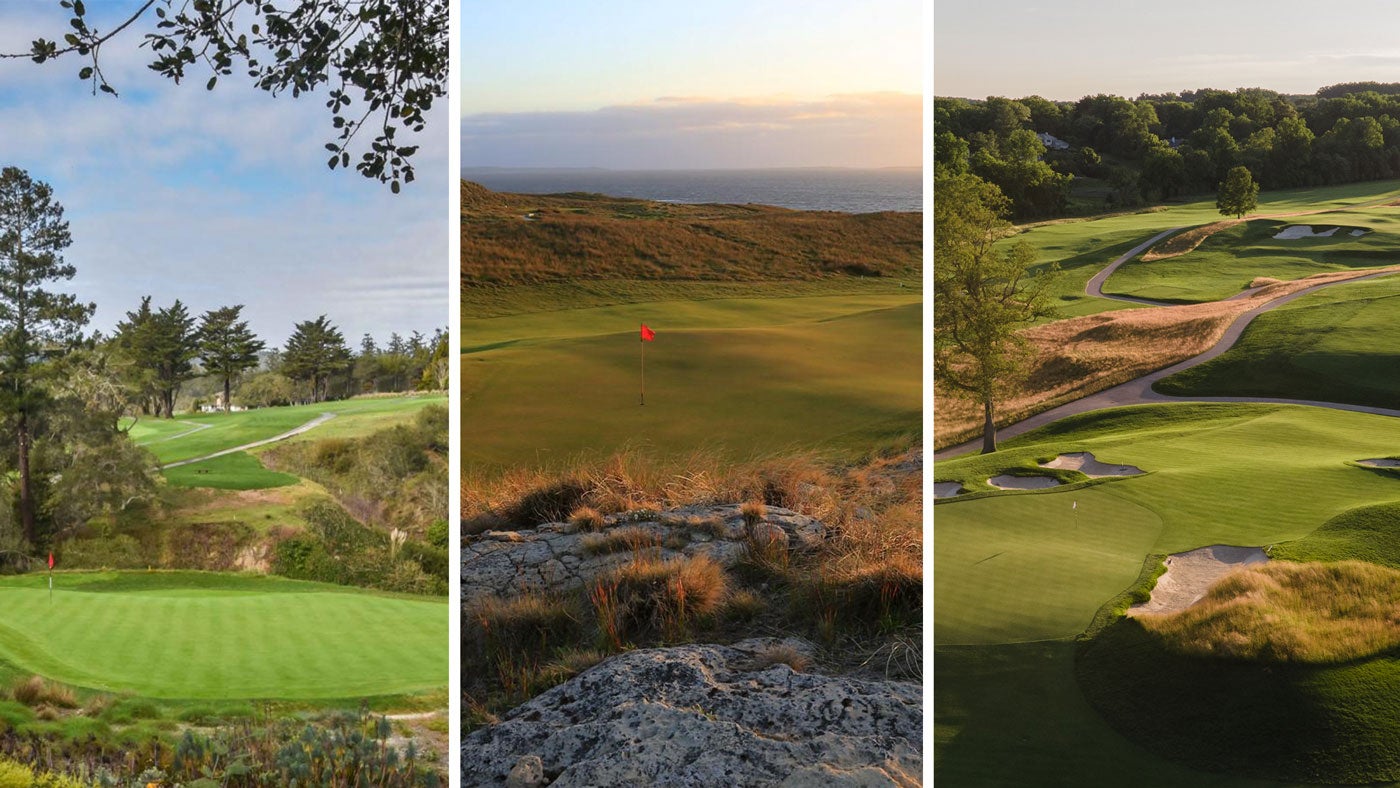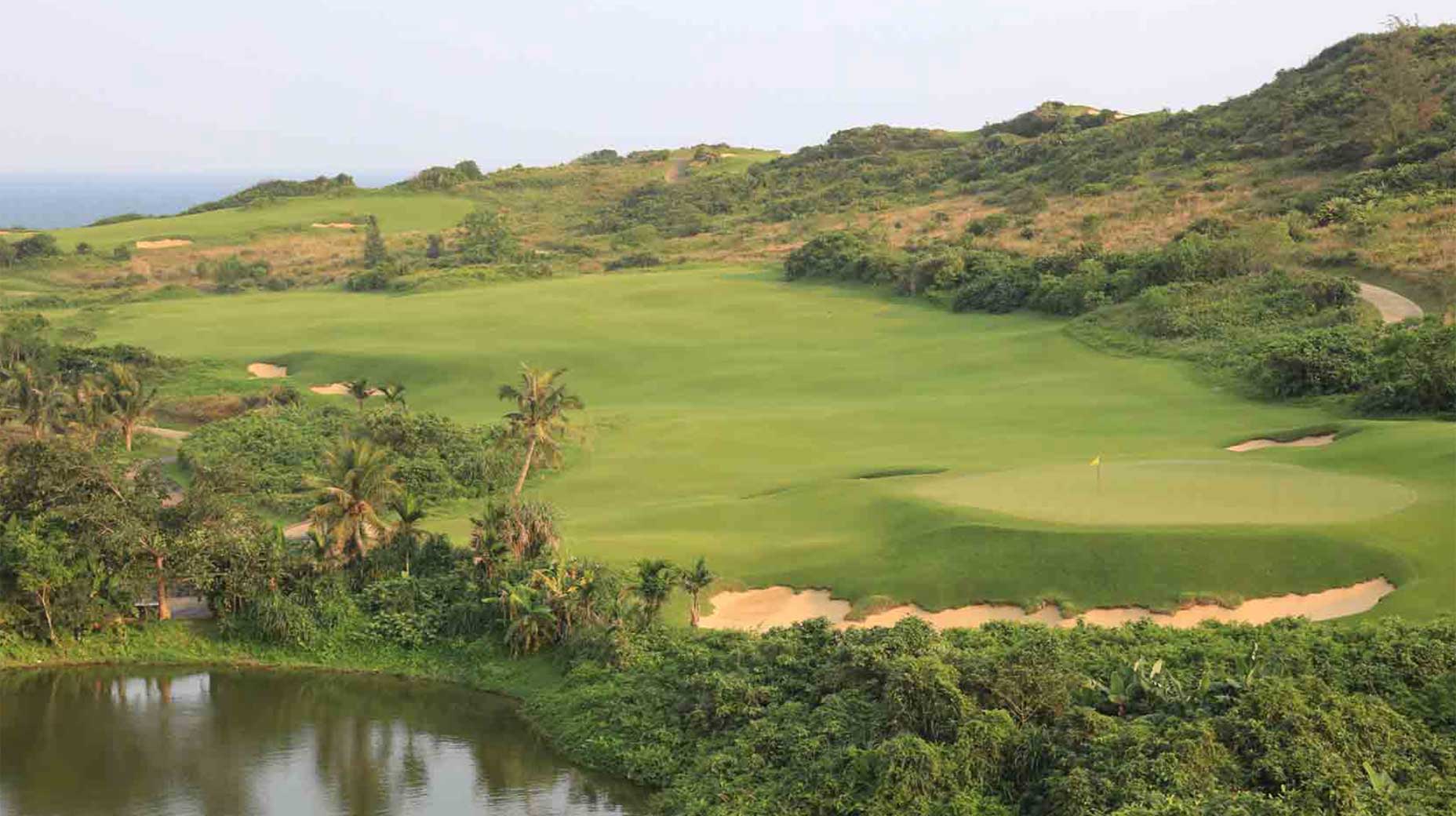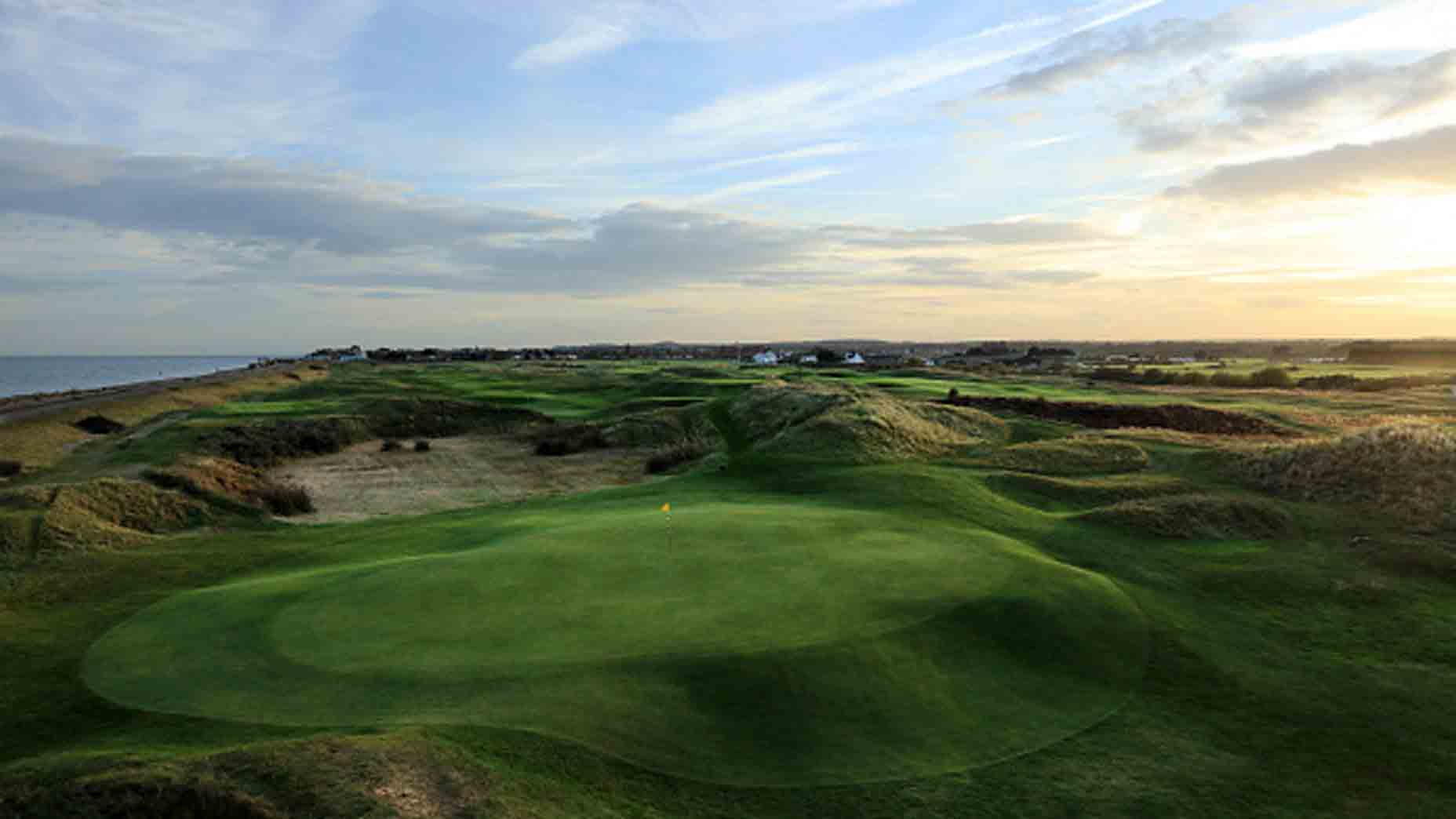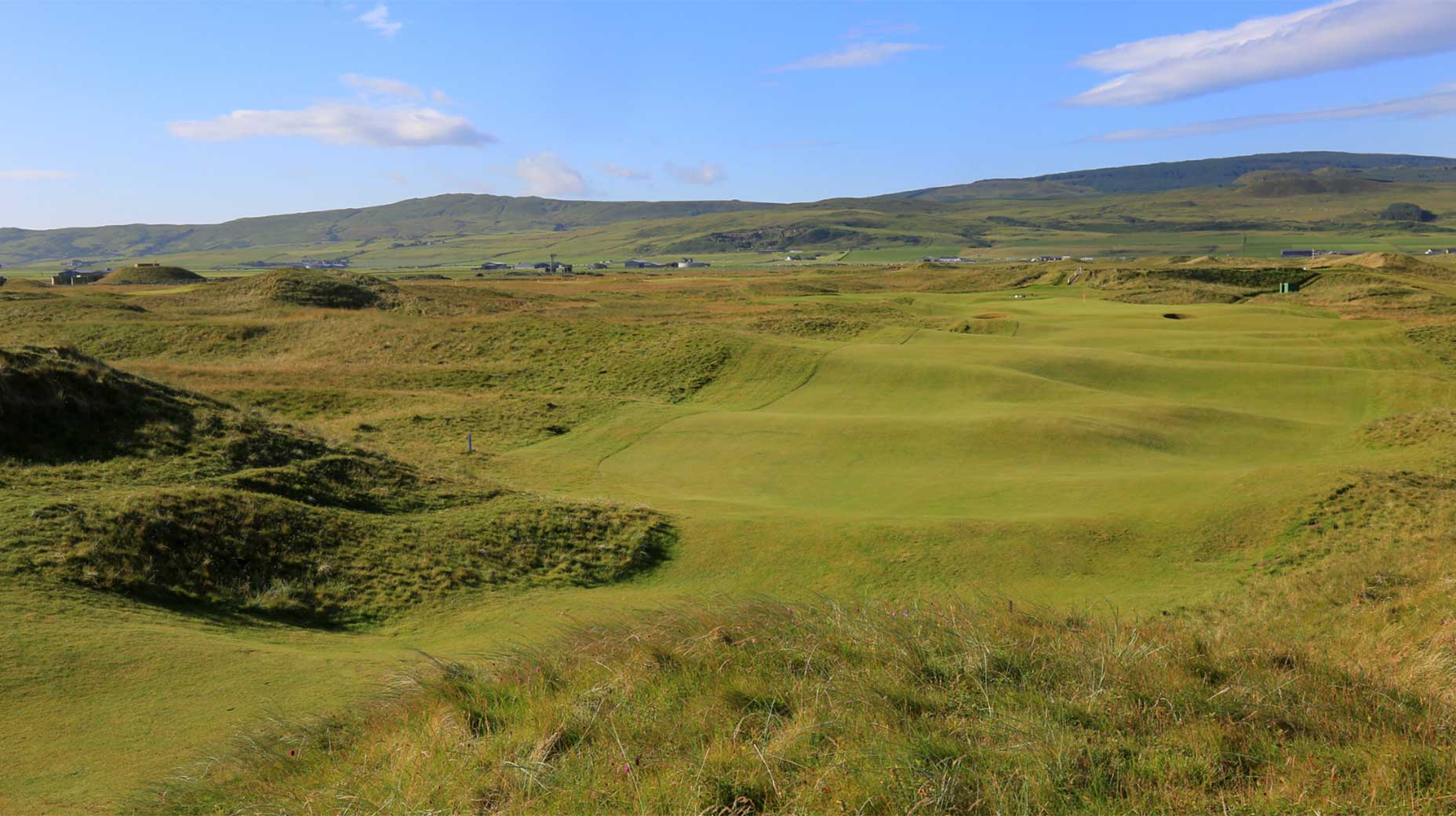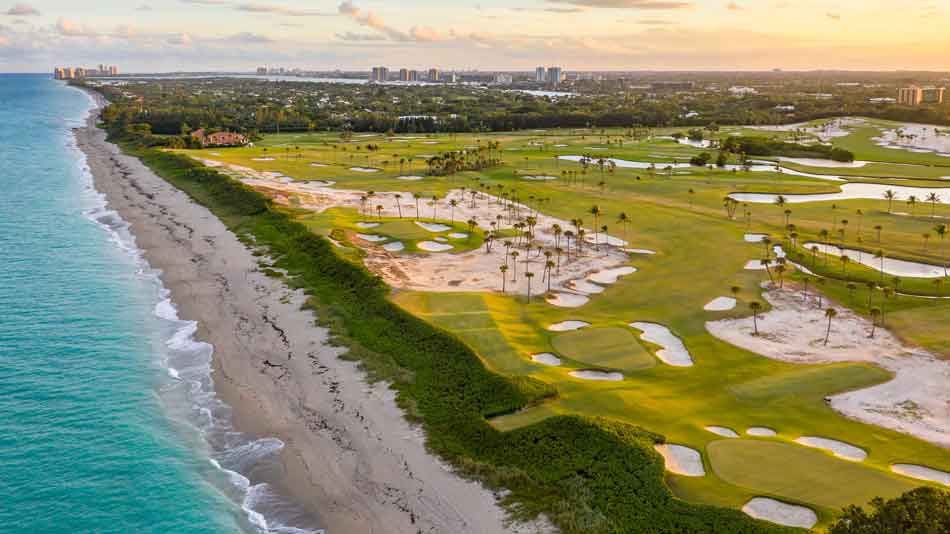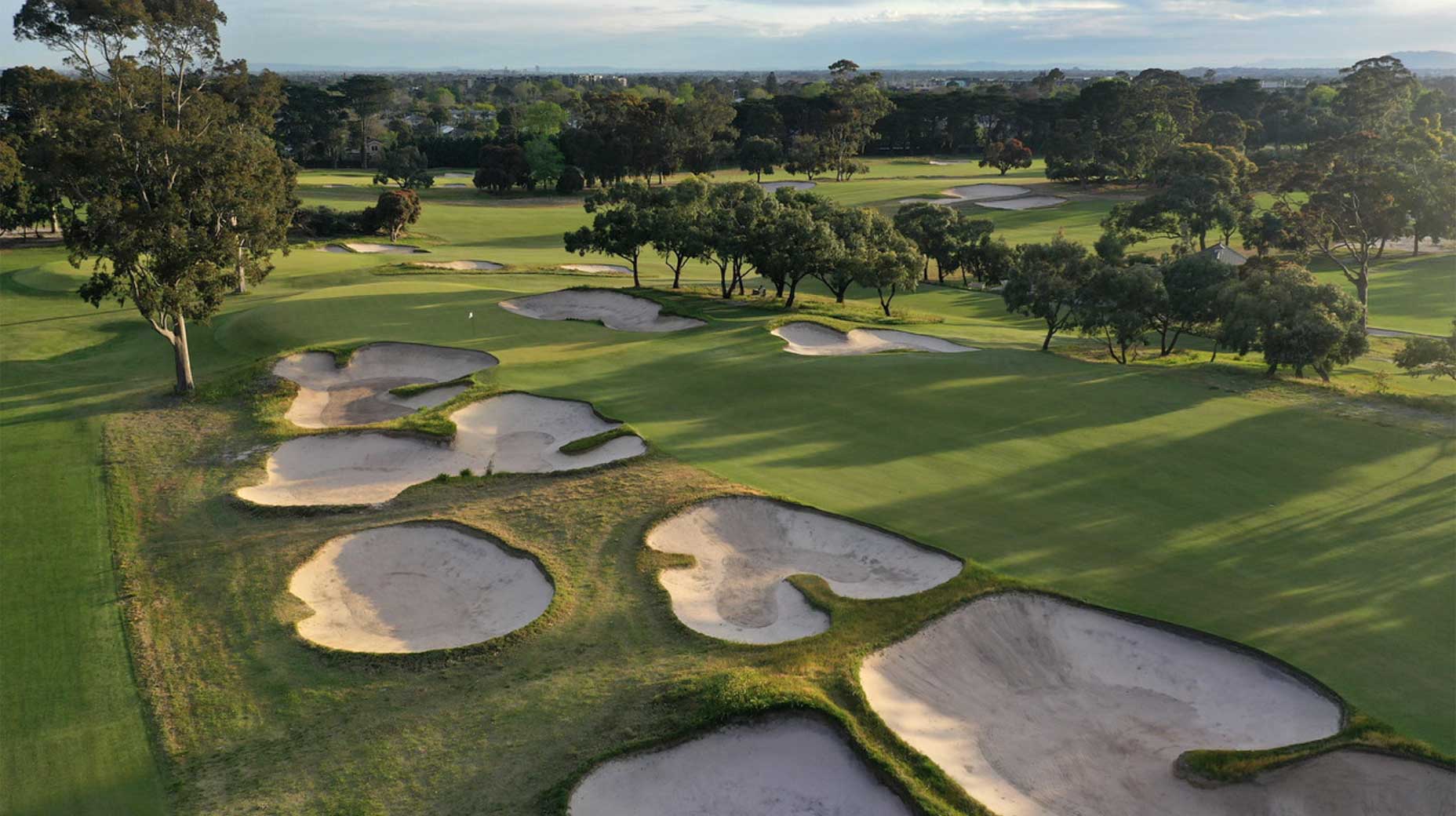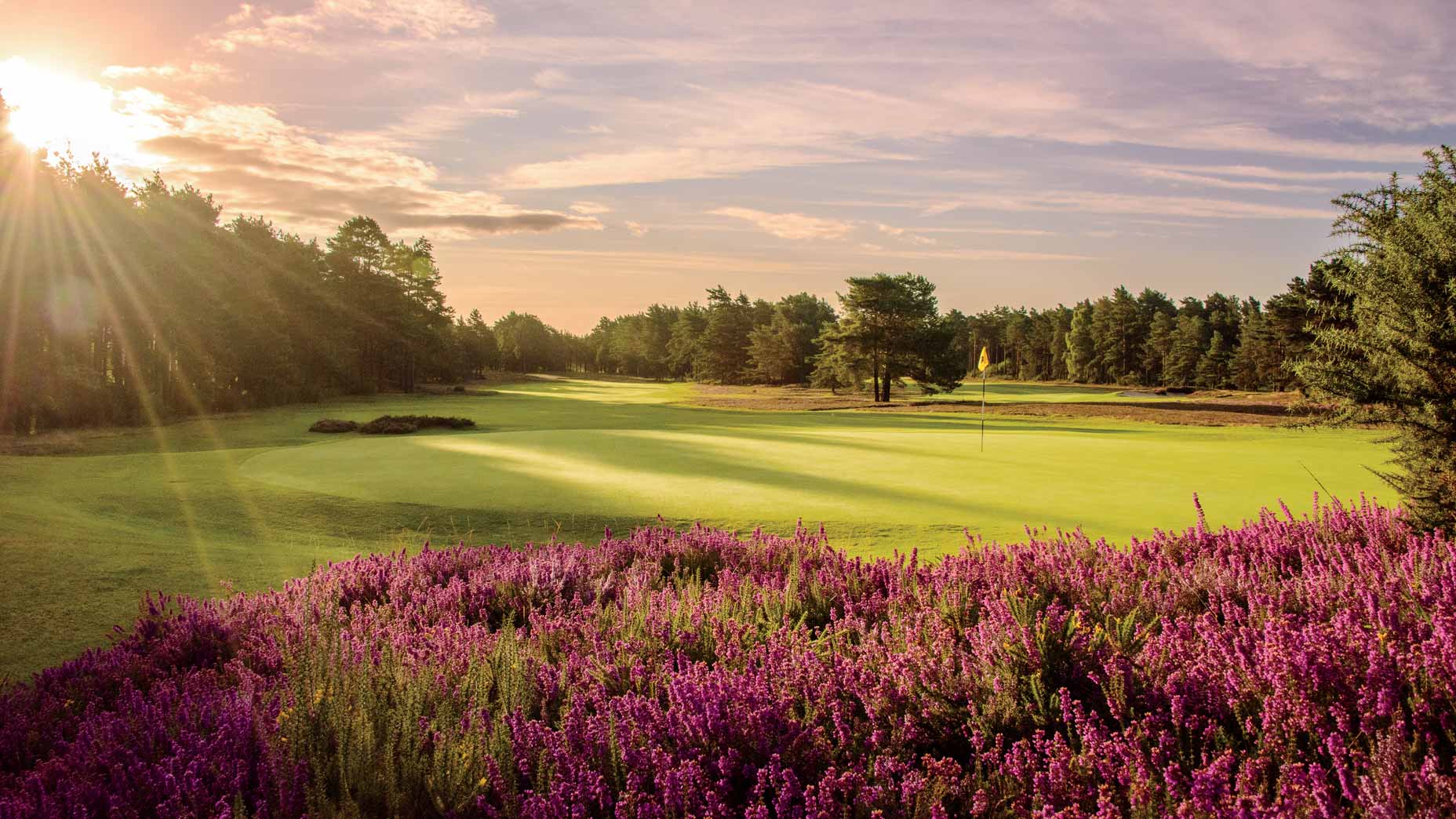GOLF published its first World Top 100 in 1985. What has changed since? Not the world — it remains round and 57.5 million square miles of terra firma. But our approach to the land — and the developers of the world’s golf courses — have changed dramatically.
At least at the very high end, which is what the World Top 100 constitutes. More than half of the courses from GOLF’s 1985 ranking don’t appear in this 2023 edition. Of those 52 courses that fell out, half were built between 1955 and 1985. On today’s list, only Casa de Campo (No. 75) and Muirfield Village (No. 98) were designed in that window.
Browse GOLF’s all-new Top 100 Courses in the World list for 2023-24
The changes began in the 1990s, when Sand Hills (No. 11) and then Bandon Dunes (No. 94) burst onto the scene in the U.S. The destination-golf movement was underway, and it gathered steam when Barnbougle Dunes (No. 36), laid across rumpled dunes on the Tasman Sea, and Cape Kidnappers (No. 55), on cliffs that rise nearly 500 feet above the South Pacific, vaulted onto our 2005 world rankings. The “build it and they will come” destination model was here to stay.
And look at what those Southern Hemisphere gems have inspired! Following in the giant footsteps of Julian Robertson, the entrepreneur behind Kidnappers, American financier Ric Kayne added New Zealand’s Tara Iti (No. 20) and Te Arai (South) (No. 85) to the World Top 100 menu. It doesn’t stop there — word is that the just-opened North Course at Te Arai might be the equal of the first two. Talk about an embarrassment of riches!
Today, coastal courses comprise nearly half of this ranking, which shouldn’t be a surprise. These settings almost guarantee two linchpins of great golf: sandy soil and wind. Indeed, the sport started in earnest along the North Sea in the 1800s, eventually turning inland in the early 1900s to be closer to where most people lived. Now we’ve come full circle, as world travel is affordable and accessible enough that more and more courses are being built in exotic locations. Welcome for the first time to our list, St. Lucia and Norway.
GOLF’s other course rankings: Top 100 Courses in the U.S. | Top 100 Courses You Can Play | Top 100 Value Courses in the U.S. | America’s Best Municipal Courses | Top 100 in the U.K. and Ireland | Top 100 Short Courses in the World
The Spice of Life? Variety
The old days, when most courses were defined as either parkland, heathland or links, are gone. How, for example, do you classify Gil Hanse’s Ohoopee Match Club (No. 81)? This inland gem in rural Georgia isn’t parkland, it’s… scrubland. What exactly is Ardfin (No. 65), on Scotland’s Isle of Jura? It isn’t a links, nor is it cliff top. How about Montana’s vast and rugged Rock Creek Cattle Company (No. 73)? You get my point — as architects work in a wider range of environments, pigeonholing courses is increasingly impossible.
If you wanted to play all 100 courses on our world list, you’d need to visit 14 countries, and that’s counting England, Scotland, Wales and Northern Ireland as one — the UK. Of this year’s eight new entries, only The Lido (No. 68) is situated in the States. Historically, an average of 54 U.S. courses make the list. This year, that number dips to 49. Still, the best of American golf remains difficult to beat, holding down 10 of the list’s top 15 spots and 29 of the top 50.
Prairie golf in America remains as strong as ever, with Sand Hills, Chicago Golf Club (No. 17), Prairie Dunes (No. 26) and Ballyneal (No. 51) all within or near the top half of the ranking. And another, Nebraska’s Caprock Ranch, just missed making the list.
The relationship between parkland golf and the World Top 100 is a little more nuanced. On the 2005 list, over 40 courses were parkland in nature. Today, that number is just over 20, with the delta predominantly having been surrendered to coastal courses. Regardless, courtesy of phenomenal restorations this century, the best parkland courses — stateside or elsewhere — are pretty darn invincible.
Thank goodness, too, because most of us live inland. Without a doubt, stellar putting surfaces are at the heart of parkland golf’s enduring allure. Just think about the best of the best of that genre. They’re household names for a variety of reasons, but the common denominator of Augusta National (No. 9), Merion (No. 13), Oakland Hills (No. 27) and Winged Foot (West) (No. 29) is their superlative greens.
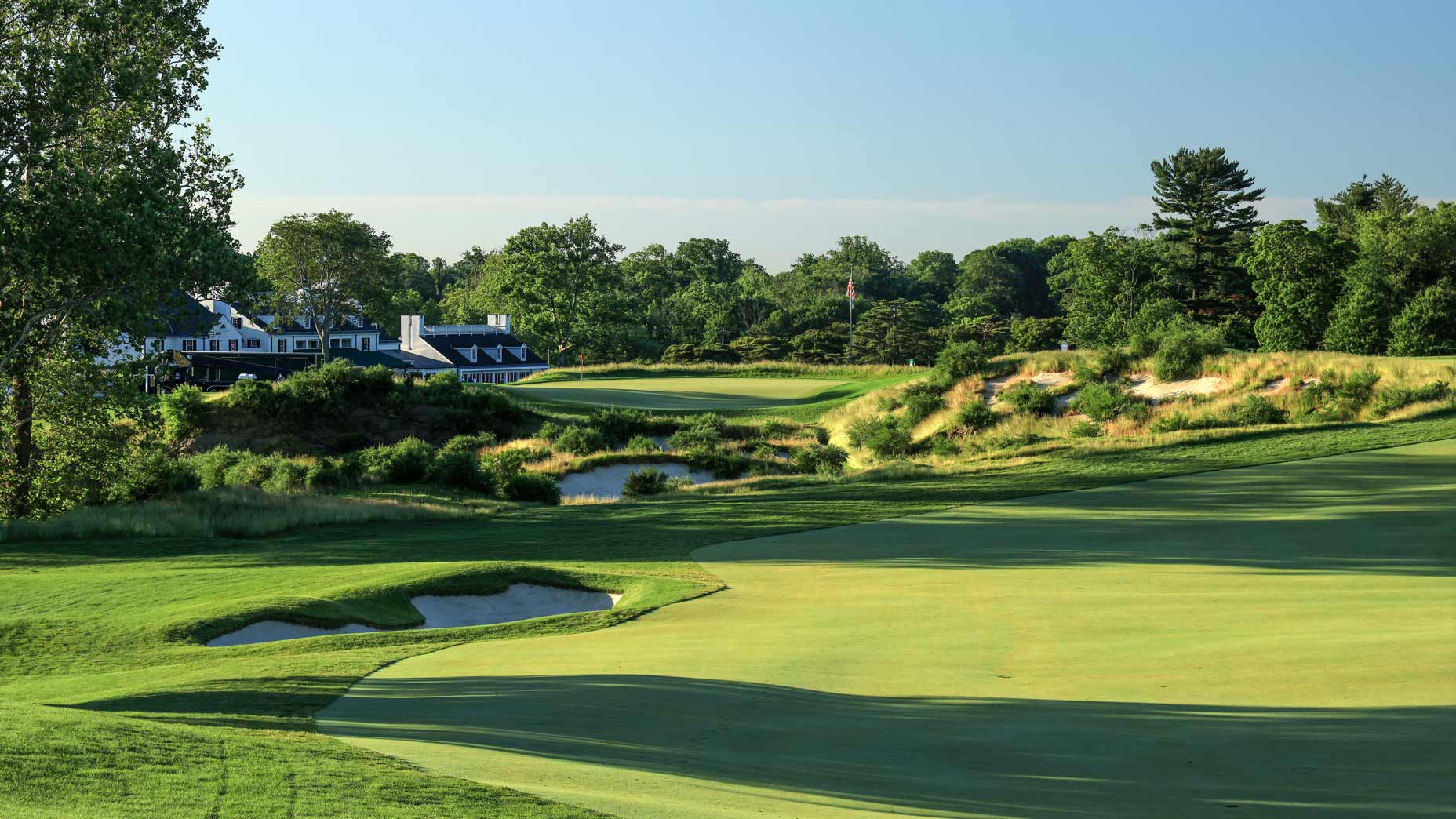
Rolling With It
The one major knock on parkland golf is that its fairways are rarely (as a Scottish friend likes to say) “rumpy-bumpy.” The emergence of Te Arai (South), Machrihanish (No. 97) and Royal Cinque Ports (No. 100) highlights the importance of swales and unpredictable micro-contours to our 119-person panel, and the need for fiddly swing adjustments brought on by such undulating, rumpled and roly-poly fairways.
The king of all such fairways is, of course, The Old Course at St. Andrews (No. 3). Today’s architects do a much better job of incorporating nature’s random movements within their fairways than their peers did back in the day. Indeed, drink in the drone image of The Lido’s 1st, 2nd, 10th and 11th fairways below. Talk about lumps! That kind of dynamic land movement helps explain why the course makes the highest debut of all the top 100 newbies.
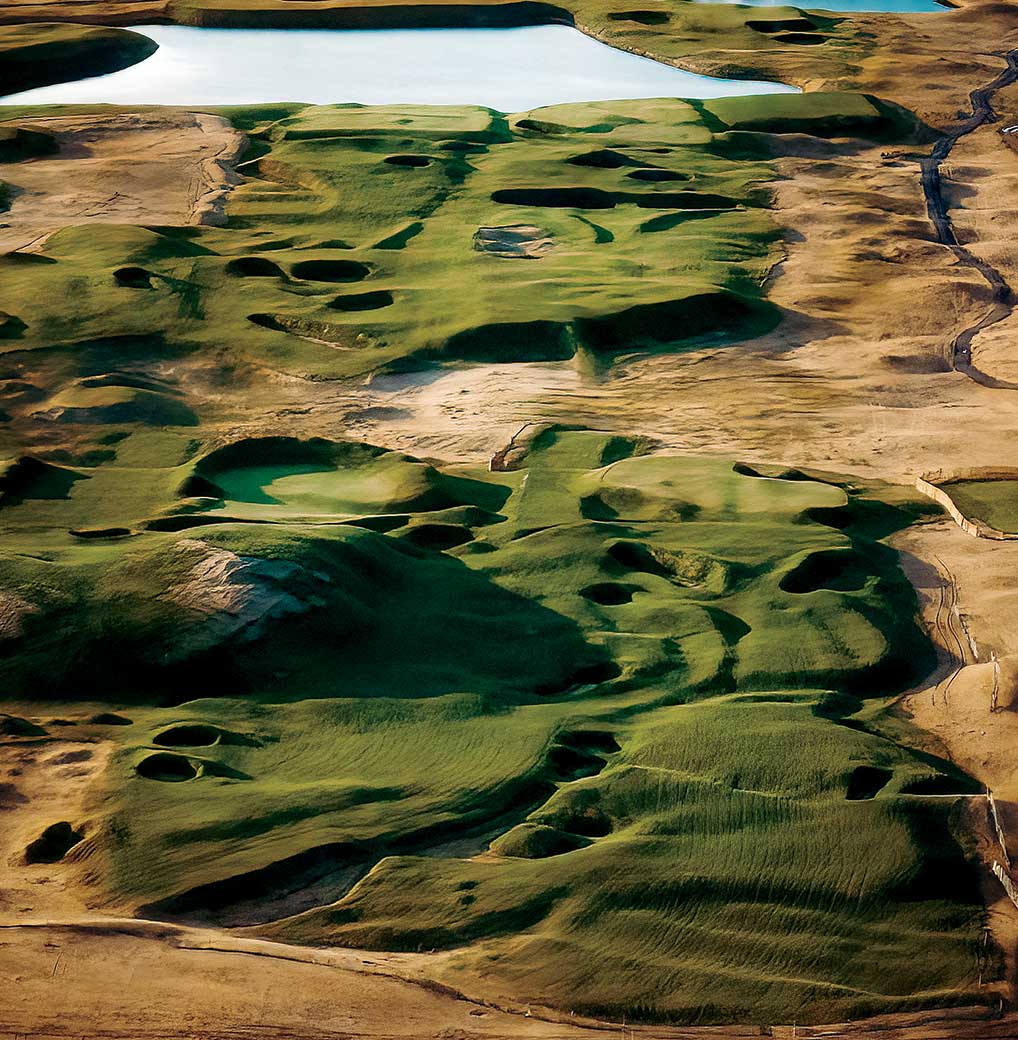
An Encore for the Ages
Despite our waxing on about the predominance of coastal golf, The Lido unfurls in rural, heartland Wisconsin. Even more interestingly, its architects, C.B. Macdonald and his protégé Seth Raynor, died eight-plus decades before the course’s 2023 completion. How can that be?
Mike Keiser, the pioneering entrepreneur behind Bandon Dunes, long harbored a fascination with Macdonald’s lost Lido course, which opened in 1917 along the Atlantic on the south shore of Long Island but was plowed over 26 years later. Macdonald expert George Bahto even drew up a plan for Keiser to re-create The Lido on oceanfront land that eventually became Bandon’s Old Macdonald course. While Keiser never quite found the right parcel to pursue his dream, his sons Michael and Chris did, though in an unexpected spot: a large, flat tract of land adjacent to their Sand Valley Resort. Cleared of its trees, the featureless parcel became the perfect canvas on which to paint The Lido of old.
Key to the effort was Peter Flory. He open-sourced hundreds of vintage photos of the original course and fed them into a software program to model The Lido as meticulously as possible. Michael and Chris Keiser then hired Tom Doak to build the course from Flory’s computer rendering. Ultimately, the data was fed into GPS-equipped dozers that shaped the course with startling precision. Refinements were carried out in the field, but the end result is an amazingly accurate reincarnation of the original Lido.
Most of the great template holes are here, from the Alps at No. 10 to the wicked Redan at No. 16. Other fabled holes are present, including my favorite, the 15th. The green is straight ahead, some 405 yards from the tee, and walled off along its right by two deep bunkers. A string of center-line bunkers punctuate the fairway. Look 75 yards left of the flag and note some bunkers seemingly out of play. Well, aim for them. An approach from the far left side of the fairway opens up the green to perfection. The hole is named Strategy, and, by all means, a caddie is vital to discovering all the possible playing angles — and how they change with the wind — when playing this epic design.
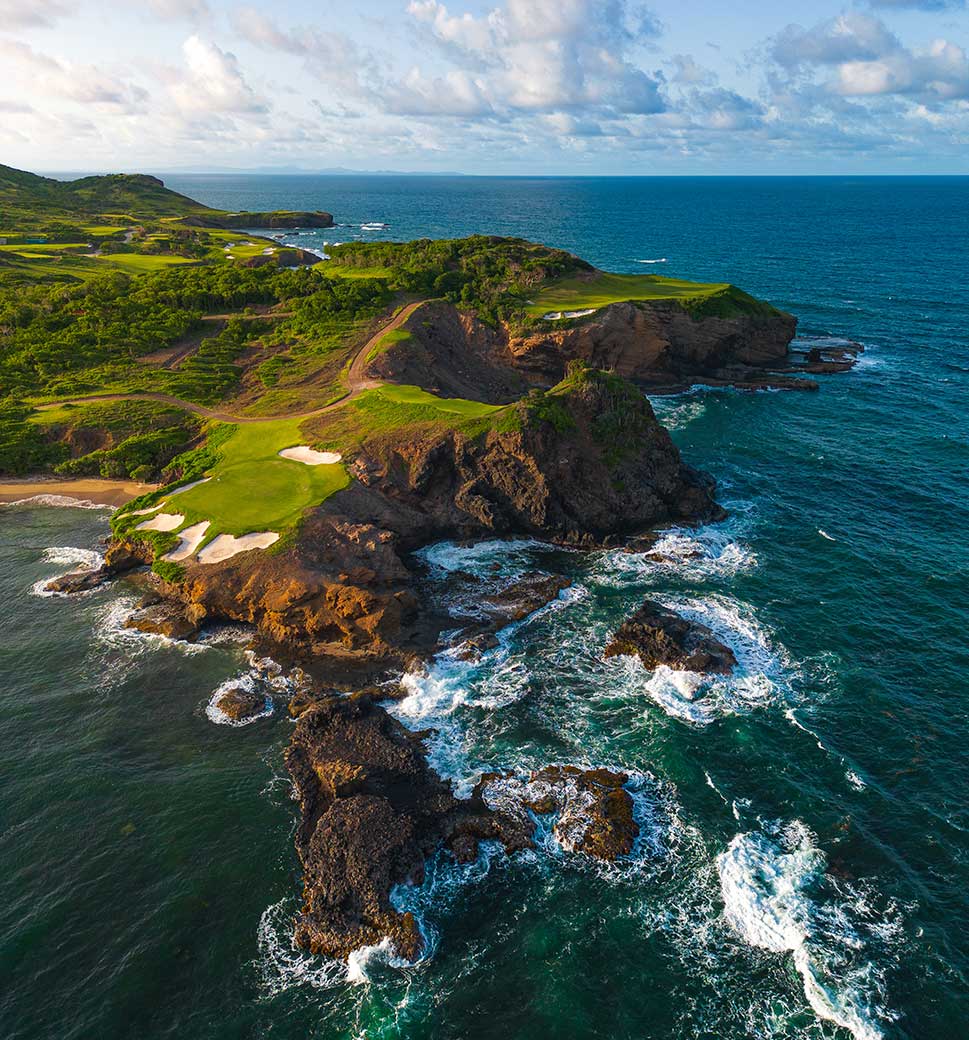
The Wow Factor Refined
Point Hardy Golf Club, aka Cabot St. Lucia, joins the ranking at No. 76. If a picture is worth a thousand words, the one of Point Hardy on the latest GOLF Magazine cover (above) speaks volumes. Still, nothing prepares you for the sensation that you feel standing on the island 15th tee and staring at the diagonal carry over a 100-foot cliff to a rolling fairway, with a view of the 16th green in the distance across an inlet.
This new Coore & Crenshaw marvel, which joins the Cabot family of stunning coastal courses, features half its greens along the Atlantic — and sets the tongue wagging. Still, to make the World Top 100, a course has to be strong from top to bottom, and Point Hardy’s interior holes fascinate. No. 2 edges uphill along an interior bluff. The left-to-right wind off the ocean pushes you right, but the best angle/view of the green is afforded along the left, closer to the bluff. It’s a game of cat and mouse between architect and player — just how much risk do you want to take? Easy to see why it’s one of Bill Coore’s favorite holes. I consider the 448-yard, par-4 18th — which calls for a second shot over a sandy cove — to be Coore & Crenshaw’s finest finishing hole, and that’s saying a lot.
Otherworldly Awesomeness
Norway’s Lofoten Links (No. 88), which graced GOLF’s cover in 2019, finally received the minimum number of votes it needed to be eligible for Top 100 inclusion. Its visionary owner, Frode Hov, and British architect Jeremy Turner have done a wonderful job transforming their initial six-hole course in 1998 to today’s stunner. I headed there in late May and, all things considered, experienced perhaps the single most exhilarating day I’ve ever had on a golf course.
The setting — whether you are observing the 2,500-foot snow-covered peaks as you putt out on 13 or the choppy Norwegian sea as you stroll down the 16th fairway — forces you to reach for a thesaurus to describe the allure of golf played inside the Arctic Circle. Look at the tee ball requirement at the 420-yard 14th below: Hitting a power fade at Hoven Mountain and watching the ball bend right with the fairway before it disappears over the tundra is a perfect match of golf to setting.
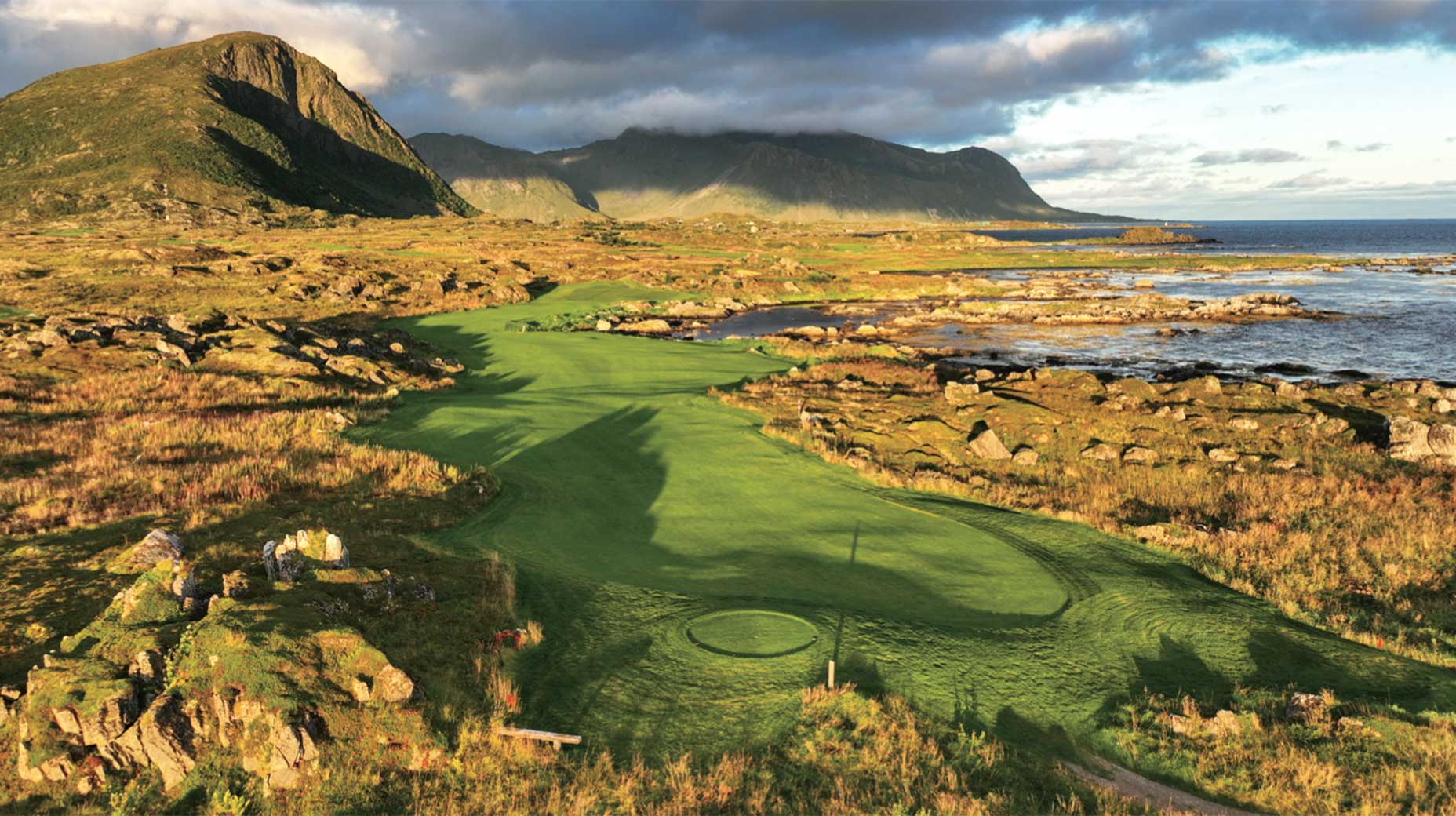
Imagine stuffing your approach close on No. 18 at 2:45 a.m. in the Land of the Midnight Sun. We were told to come back in late August for the Northern Lights, when the course really shines. Good grief. If ever you’re going to reconnect with nature, it’s here. Falsterbo GC, in south Sweden, was once in our Top 100. Otherwise, the next nearest world-class course to Lofoten is Royal Dornoch (No. 10), over 900 miles away.
Speaking of closeness, after greenskeeper Jerry Mulvihill bedded down Lofoten for the 2022 winter, he went to St. Lucia to help his friend and fellow greenskeeper Damon Di Giorgio with the grow-in at Point Hardy. The “band of brothers” camaraderie found within greenskeeping is one of the really special aspects of that profession.
The Venerable… and the Modern Age
I’ve yet to speak about the top 10 courses. Why? Because they hardly ever change. Yet again, Pine Valley maintains a comfortable lead at No. 1. In fact, there was zero movement in the top nine spots. Royal Dornoch, Muirfield and Sand Hills jostled for spots 10 through 12, with Sand Hills just barely slipping out of the top 10, meaning no course built after 1950 cracks that top tier.
Twenty-nine “modern” courses — those built after 1946 — occupy Nos. 11 through 100. On those 29, there’s no escaping Pete Dye’s impact. The late, legendary architect is directly responsible for three courses: Casa de Campo, The Ocean Course at Kiawah (No. 62) and Whistling Straits (No. 91). But designers who worked for and learned from Dye — including Coore, Doak and Rod Whitman — tack a whooping 16 courses onto that tally. The “Dye Tree” shapes these contemporary treasures.
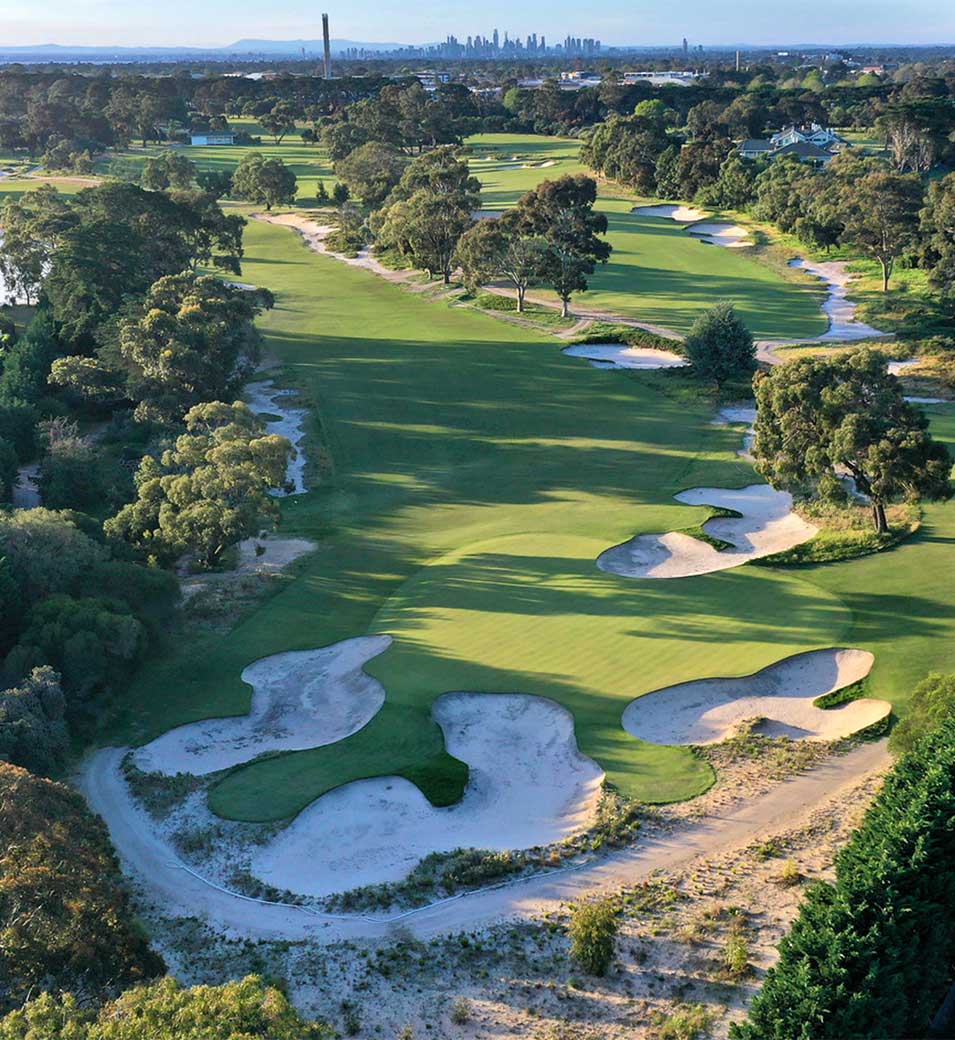
Where Credit Is Due
More than just architects deserve recognition. These 100 courses represent some of the world’s highest standards of greenskeeping. Stephen Rabideau at Winged Foot, Craig Smith at Chicago GC, Jon Wall at Shanqin Bay (No. 95) and their crews provide playing surfaces that allow those designs to sparkle.
And let’s not forget the developers. After all, neither architects nor greenskeepers procure the land or determine what restrictions are placed on it (housing, etc.). It’s the developer who takes the formidable up-front capital risk for land acquisition, course construction and infrastructure. Securing permits and sourcing equipment to remote locations isn’t as glamorous as you may think.
Indeed, how courses come to be has changed significantly from the 1800s, when locals would get together to create a private club, then contact the best player they knew to lay out a course. Those days have mostly been replaced by visionary entrepreneurs willing to lay out gobs of money for the sake of eventually attracting a loyal customer base.
Just in the past few years, we have lost several such pioneers who brought us incredibly compelling golf, men like Mark Parsinen (Kingsbarns, No. 86; Castle Stuart, No. 89), Herb Kohler (Whistling Straits) and Julian Robertson (Cape Kidnappers).
We are witnessing a changing of the guard. Trailblazer Mike Keiser enjoys an unmatched record of creating world-class experiences for the recreational golfer. How lucky are we to see his sons Michael, 42, and Chris, 35, carry on that legacy with The Lido, their first entrant to this list? The pair have several more exciting projects set to open over the next few years.
Ben Cowan-Dewar, 44, is already tied to four courses on this list (Point Hardy, Castle Stuart, Cabot Cliffs, No. 52 and Cabot Links, No. 79) and has three other high-profile projects well underway in the Canadian Rockies, Florida and the Scottish Highlands. What can Ric Kayne possibly do for an encore after his Kiwi successes? Might Frode Hov follow on from Lofoten and build another course in his enchanting home country? Going forward, look to these entrepreneurs to play a key role in the growth of the game.
The Great Equalizer
Few courses can compete with the natural beauty of places like Kawana (No. 53), with its views of Mt. Fuji to the northwest, and Ardfin, in the Inner Hebrides. Both move up nine spots in this ranking. Yet, course architecture is the great equalizer — and it’s what makes our ranking more than a beauty contest. Plenty of courses built over muted landforms hold great favor with our panelists, including Muirfield, Chicago GC, Pinehurst No. 2 (No. 21), Garden City (No. 48), Baltusrol (Lower) (No. 67), Les Bordes (New) (No. 83) and Yeamans Hall (No. 99). Superb golf architecture is the common thread that runs through these seven incredibly diverse tracks.
That’s what’s so phenomenal about golf today. It introduces you to the full spectrum of wonders found in nature — from the audacious to the elemental to the sublime. The biggest challenge is deciding where to play next. The fantastic thing? There are no wrong decisions.



